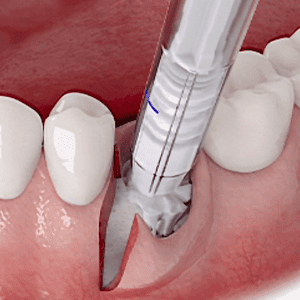
Bringing Tomorrow’s Innovations to You Today
For the most innovative and highest-quality dental instruments choose Strauss Diamond, where innovation, quality, and education are our priorities. Our dental instruments are in use

Dental cements have been widely used in various clinical applications since the early twentieth century. They are used as filling materials, protective cavity liners, luting materials for crowns, bridges, inlays and orthodontic appliances, root canal fillings, and pulp capping. Various types of cements are available for different purposes for example the most common cements we see today are: Glass Ionomer, Resin, Resin Modified Glass Ionomer, Zinc Oxide Eugenol, Zinc Phosphate, and Zinc Polycarboxylate.
If you’re in the initial planning stages of preparing a patient for dental work, you may already be encountering a number of options to consider. So how can you improve your dental practice with dental cement?
Use dental cement for crowns, bridges, veneers, and more. When it comes to implants, cemented crowns look more like a natural tooth and are thus more flexible in achieving the desired appearance.
Besides the possibility the cement may cause gum inflammation or bone loss, the chief detraction from cemented crowns is the difficulty in removing them. Crowns are often damaged in this process so it’s highly likely they will have to be replaced rather than repaired. It’s possible to use weaker cement, but this raises the risk of the crown coming loose at some point from the abutment. Yet, cements are still used more than screws due to the aesthetic goal of the patients.
As you plan for an implant, discuss which type of attachment will work best for your patients, depending on the tooth to be replaced and other conditions with their oral health. The end result, though, should be the same — a new, natural-looking tooth that serves you well for many years to come.

Dentists, keep in mind you will need different kinds of cements for all the necessary uses.
For example, resin-based cements; resin-based composites, are commonly used to definitively cement indirect restorations, especially resin-bonded bridges and ceramic or indirect composite restorations, to the tooth tissue. They are usually used in conjunction with a bonding agent as they have no ability to bond to the tooth, although there are some products that can be applied directly to the tooth (self-etching products).
A popular cement, Panavia, created in India is a forerunner in self-adhesive resin cements containing the unique LCSi monomer that adheres to virtually every material including glass ceramics without the need for a separate primer. The name Panavia in Hindi Sanskrit means “stick to a tooth” and is described to be one of the toughest dental cements in the world.
Need more info? Here are 3 main resin-based cements we recommend;
Dental cement has a highly valuable place in dentistry. If you’d like to learn about how dentists use dental cement, contact Strauss Diamond Dental for a phone consultation.

For the most innovative and highest-quality dental instruments choose Strauss Diamond, where innovation, quality, and education are our priorities. Our dental instruments are in use

When running a dental practice it can be challenging to make your patients feel comfortable. After all, the fear of going to the dentist is
© 2021 StraussDiamond Return Policy Privacy Accessibility
